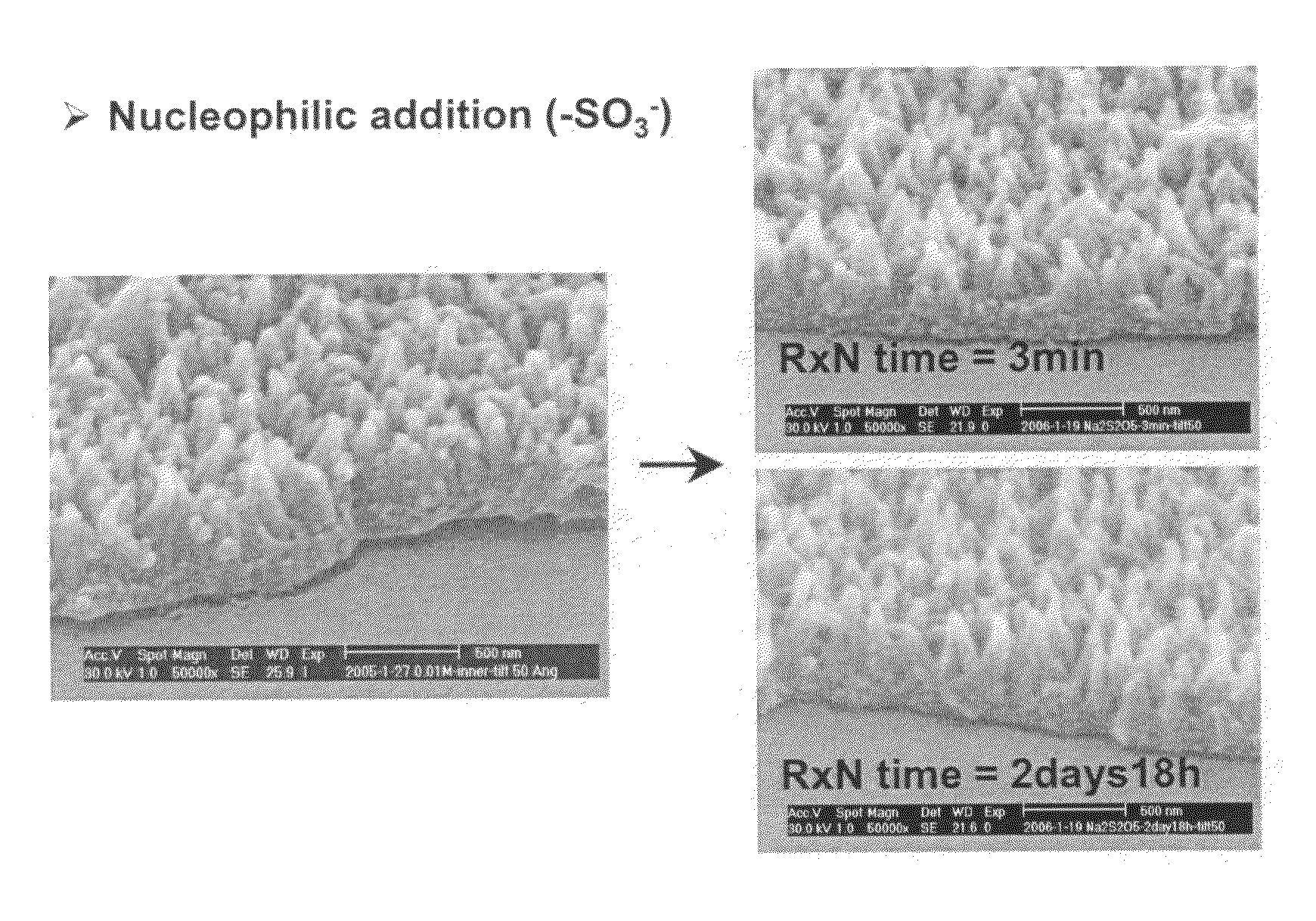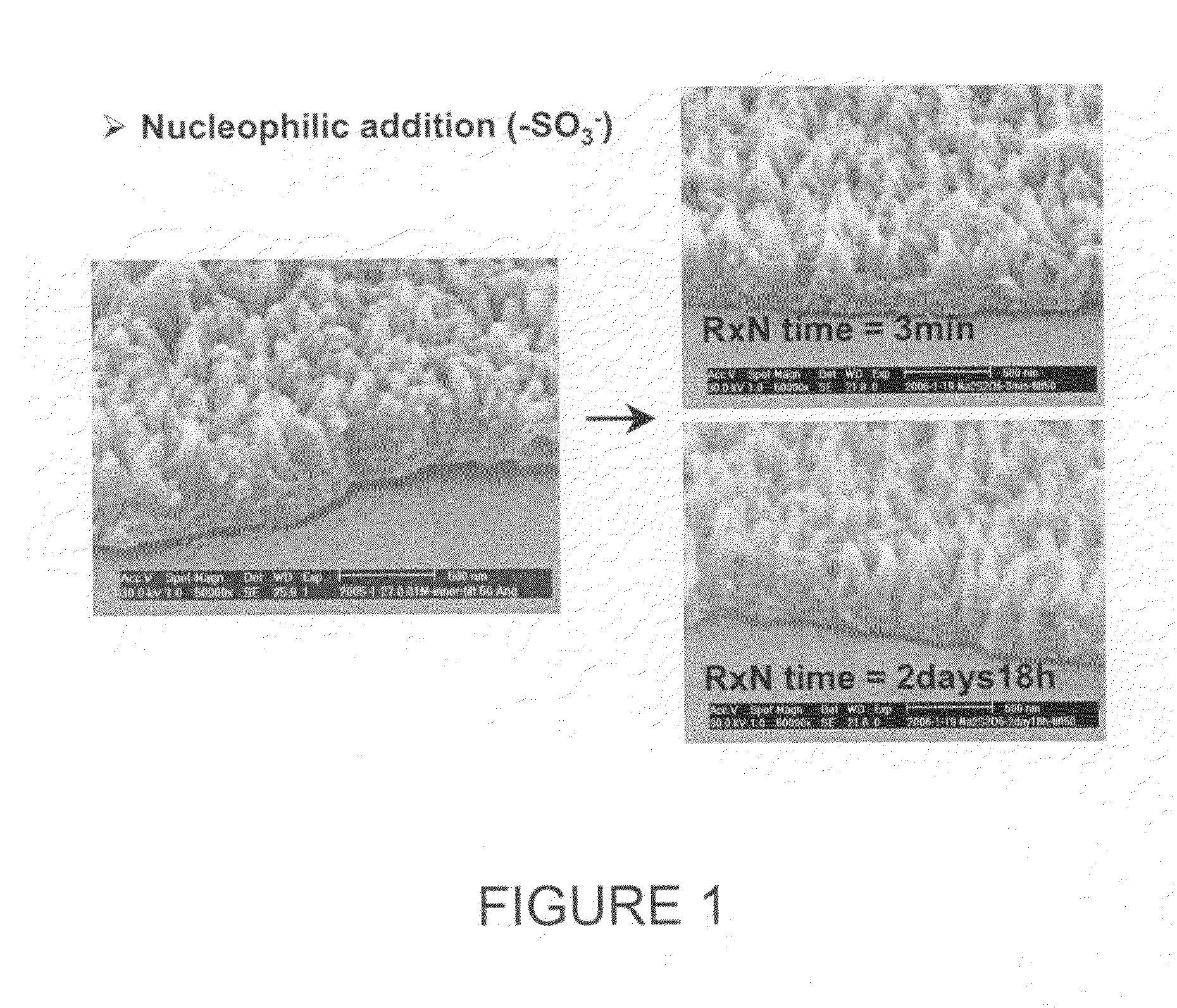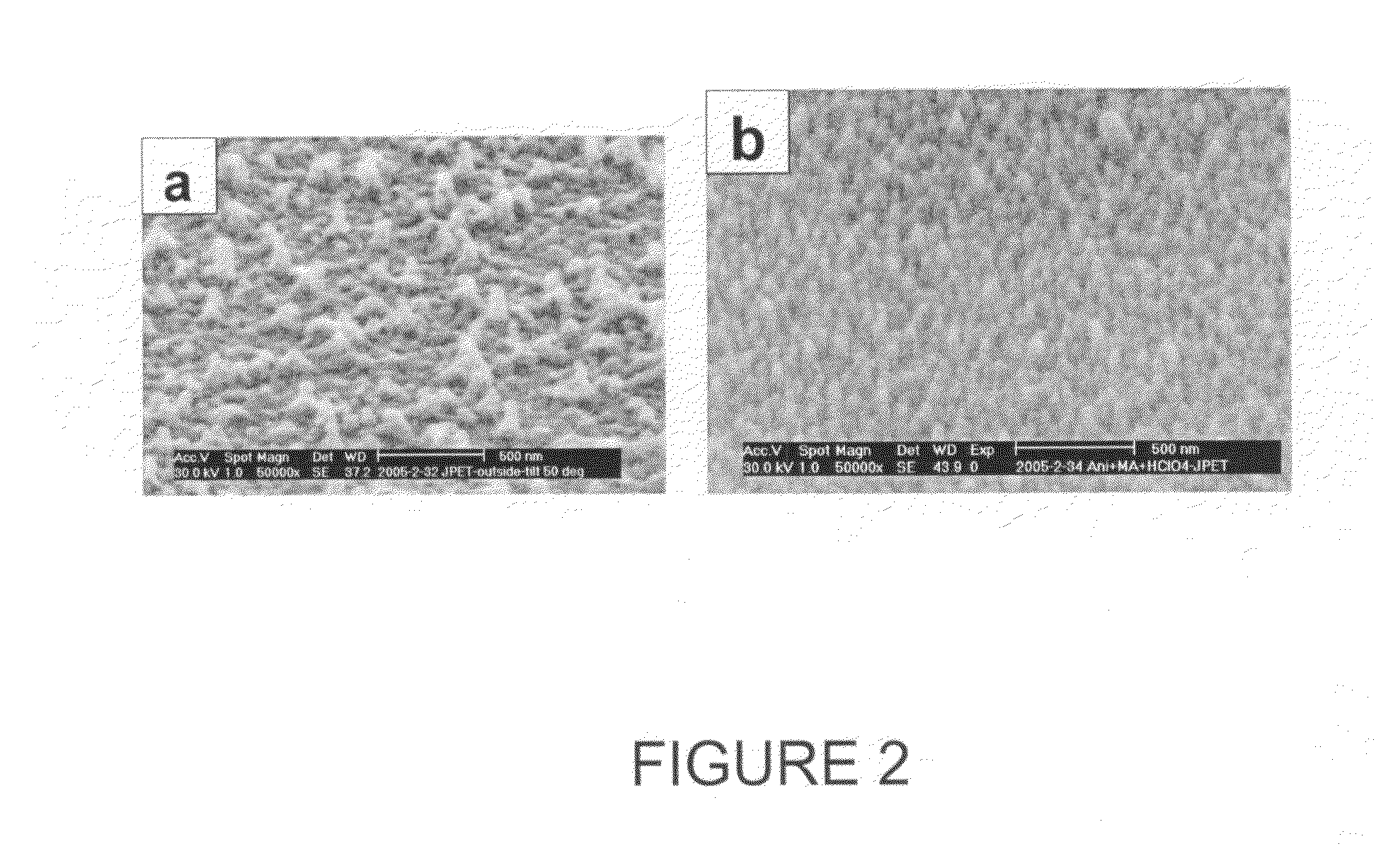Aligned nanostructured polymers
a nano-structured polymer and nano-structure technology, applied in the direction of discharge tube/lamp details, non-electron-emitting electrode materials, lamp incadescent bodies, etc., can solve the problems of waste stream that must be treated, thin film preparation, and limited substrate method
- Summary
- Abstract
- Description
- Claims
- Application Information
AI Technical Summary
Benefits of technology
Problems solved by technology
Method used
Image
Examples
example 1
Dilute Polymerization Trials
[0066]Aniline was dissolved in predetermined amounts in 1M dopant acid solution, and carefully transferred to a solution of ammonium peroxydisulfate (APS) dissolved in 1M dopant acid solution in beakers. The reaction was carried out at various temperatures (room temperature, 0-5° C. in an ice bath, 12-14° C. in a freezer) both with and without disturbance (e.g. stirring). After 24 hours, the dark-green polyaniline precipitate was collected either by dialysis tubing (MWCO 12 k-14 k), and then purified by dialysis with deionized water or using a Buchner funnel with a water aspirator and then purifying portionwise with deionized water until the filtrate became colorless. Trials were conducted using various concentrations of aniline to study the formation of polyaniline nanofibers, ranging from 8 mM to 128 mM. The molar ratio of aniline and APS was was also varied from 4.35:1 to 1:1. A variety of acids were used as detailed above. 0.2 M to 1.2 M of dopant aci...
example 2
Porous Membrane Controlled Polymerization Trials
[0067]Regenerated cellulose dialysis tubing with molecular weight cut-off (MWCO) 3,500 (Spectra / Por 3, Spectrum Laboratories, Inc.) was used as a permeable membrane, aniline as a monomer, ammonium persulfate as an oxidant and various inorganic / organic acids as dopant acids. Aniline was dissolved in 12 mL of 1M dopant acid solution, and carefully transferred to dialysis tubing (MWCO 3500) sealed with Spectra / Por Closures. The sealed dialysis tubing was put into a 600 mL beaker with a solution of ammonium peroxydisulfate dissolved in 500 mL of 1M dopant acid solution. The reaction was carried out at room temperature and at a temperature 0-5° C. (ice bath) both without any disturbance as well as with stirring. After 24 hours, the precipitated dark-green polyaniline outside the dialysis tubing was collected and purified using the same procedures as mentioned in the dilute polymerization. Trials were conducted using various concentrations o...
PUM
| Property | Measurement | Unit |
|---|---|---|
| Temperature | aaaaa | aaaaa |
| Electrical conductivity | aaaaa | aaaaa |
| Diameter | aaaaa | aaaaa |
Abstract
Description
Claims
Application Information
 Login to View More
Login to View More - R&D
- Intellectual Property
- Life Sciences
- Materials
- Tech Scout
- Unparalleled Data Quality
- Higher Quality Content
- 60% Fewer Hallucinations
Browse by: Latest US Patents, China's latest patents, Technical Efficacy Thesaurus, Application Domain, Technology Topic, Popular Technical Reports.
© 2025 PatSnap. All rights reserved.Legal|Privacy policy|Modern Slavery Act Transparency Statement|Sitemap|About US| Contact US: help@patsnap.com



